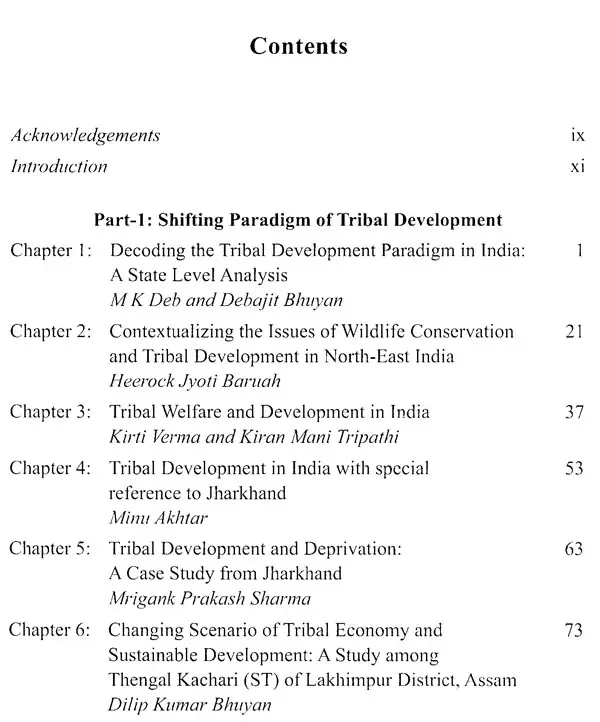
Tribal Development in India (A National Review)
Book Specification
| Item Code: | UAM257 |
| Author: | Vijay Prakash Sharma and Swapan Kumar Kolay |
| Publisher: | Agam Kala Prakashan, Delhi |
| Language: | English |
| Edition: | 2022 |
| ISBN: | 9788195009879 |
| Pages: | 380 |
| Cover: | HARDCOVER |
| Other Details | 9.50 X 6.00 inch |
| Weight | 660 gm |
Book Description
The present volume, Tribal Development in India is a mosaic of ideas from experts of several disciplines that concerns tribal world in India. Authors of article represent various states of Indian Union from Himalayas to Cape caumerine. There are twenty-five essays dealing with status of tribal development in India each one capitalise upon present situation. The latest field data has been used to draw conclusions. This book will be unique in its content which will enrich readers knowledge about tribal development in India. This volume will also be beneficial to Students of Anthropology, Sociology, Socialwork and Public Administration. Government functionaries and development planners will also get benefitted from the knowledge provided in this volume. This proposes a multidimensional outlook on Tribal development.
Professor (Dr.) Vijay Prakash Sharma is an eminent Social Anthropologist and Director, VAIDYAS-India, President, Jharkhand Anthropological Association, Vice president- Institute of Applied Anthropology and Social Research, Bidisa, W.B, India; Vice President- Ranchi University Anthropological Alumni Association; Former Director, Institute for Human Development, Eastern Regional Centre, Ranchi; Adjunct Faculty, NIRD& PR, Ministry of Rural Development, Government of India, Hyderabad; He is in editorial board of Journals, and member of governing bodies of several societies. Senior and Lead Advisor for Government of India and Jharkhand appointed by USAID-India for implementation of India State Fiscal Reform Programme under Ministry of Finance Government of India(2005-2011) Senior Social Scientist- MCR Project of DFID & London school of Hygiene and Tropical Medicine (1997-2002), RA,UGC Centre of Advanced Study in Anthropology (1986-1994), Lecturer in Anthropology, G. G. University and Ranchi University, India; Widely travelled in Asia and Europe, Fellow and member of many International and National Professional Institutions including, Royal Anthropological Institute of Great Britain and Ireland, London; American Anthropological Association (USA), International Union of Anthropological and Ethnological Sciences, Life member of Indian Anthropological Association and Indian Anthropological Society and many more. He has published 14 books and 100+research articles. His notable ethno graphs include The Hmars of Manipur: An Anthropological Exploration and; Sadhus and Indian Civilization.
Prior to the British colonization the tribal communities were described as part of Indian caste system like Gond Jati, Munda Jats, Santhaal Jati, Ho Jati, Oraon Jati, Bhil Jaati, so on. The British administrators introduced the term "Tribe" on a false notion of their animistic belief and nature worship, segregating them from large Indian polity for political and administrative purpose. The communities in North-East India that did not allowed British administration to enter in their territories were placed in one group called "excluded area" and the communities in Middle and East India that allowed them to enter in their area were grouped as "partially excluded areas". This was accepted by the new independent government of India which placed these areas under sixth and fifth schedule of the constitution of India respectively and also declared them scheduled tribes- a new administrative connotation.



















